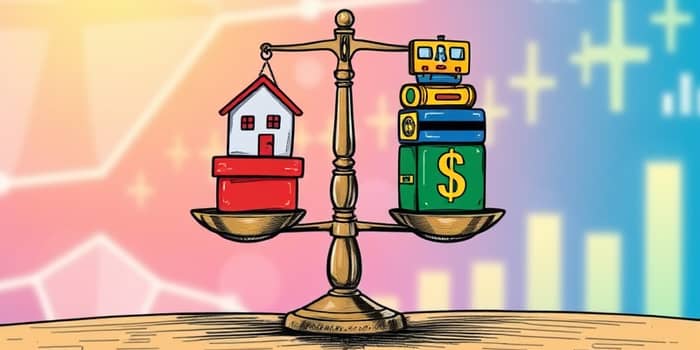
In today’s dynamic financial landscape, borrowing strategically can be the difference between growth and stagnation. By diversify borrowing across loan types, businesses and individuals alike can harness cost advantages while safeguarding their assets. This article explores how stacking secured and unsecured loans can balance opportunity and risk, offering a clear roadmap to maintain solid credit habits as you navigate complex funding needs.
At the core of any borrowing decision lies the choice between secured and unsecured debt. Collateral-backed borrowing reduces rates but introduces asset risk; unsecured loans preserve property but carry higher costs.
Secured loans require collateral—homes, vehicles, cash deposits or investment portfolios. In exchange, lenders offer significantly lower interest rates, larger principal amounts and more lenient credit thresholds.
Unsecured loans rely solely on the borrower’s creditworthiness. Without collateral, approvals hinge on credit history and income, driving interest rates typically above 12% and limiting loan size to around $100,000.
When structuring a stack, understanding market rates and approval thresholds is essential. For 2024–2025:
• Secured personal loans: 6–10%, depending on collateral quality and borrower credit.
• Unsecured personal loans: 12–18% on average, spiking above 25% for subprime credit.
Credit score benchmarks matter:
Stacking leverages the complementary strengths of each loan type. A thoughtful blend helps you balance risk and rewards in line with financial goals.
Both lenders and borrowers benefit from rigorous risk controls. A robust assessment process ensures sustainable debt levels and protects against default cascades.
Stacking secured and unsecured loans offers a way to tailor financing to distinct needs—but it also carries trade-offs.
Pros:
Secured loans deliver reduced rates and larger amounts, making them ideal for capital-intensive projects. Unsecured credit preserves personal or business assets and typically closes faster.
Cons:
Secured debt carries the risk of asset loss and involves a lengthier underwriting process. Unsecured loans impose higher interest charges and require strong credit, capping borrowing power.
Consider a small manufacturing firm that needs new equipment and seasonal inventory:
1. Secure an equipment loan backed by the machinery itself at 7% interest, preserving working capital.
2. Maintain an unsecured line of credit at 14% to cover payroll fluctuations and raw material orders.
This pairing ensures that fixed assets fund long-term growth, while flexible credit handles unpredictable cash demands. Always set realistic repayment time horizons to avoid unmanageable monthly outlays.
Banks, credit unions and fintech platforms continuously adjust their lending mix to meet regulatory expectations and market demand. Under SBA guidelines, loans above $500,000 must be collateralized to the “maximum extent possible,” though smaller business loans often remain unsecured.
Portfolio managers monitor concentration risk, ensuring no single sector or collateral type dominates. Borrowers should likewise review their total debt composition annually, rebalancing toward secured or unsecured commitments as credit conditions evolve.
Stacking secured and unsecured loans is more than a technical exercise—it’s a disciplined strategy that blends opportunity with protection. By preserve personal and business assets and avoid excessive monthly payments, you build resilient finances that withstand uncertainty.
Embrace a proactive stance: map out your borrowing needs, choose the appropriate loan for each purpose, and revisit your stack regularly. In doing so, you not only optimize cost but also cultivate the agility and confidence to seize new opportunities. Let this balanced approach serve as the foundation for sustainable growth and financial peace of mind.
References













